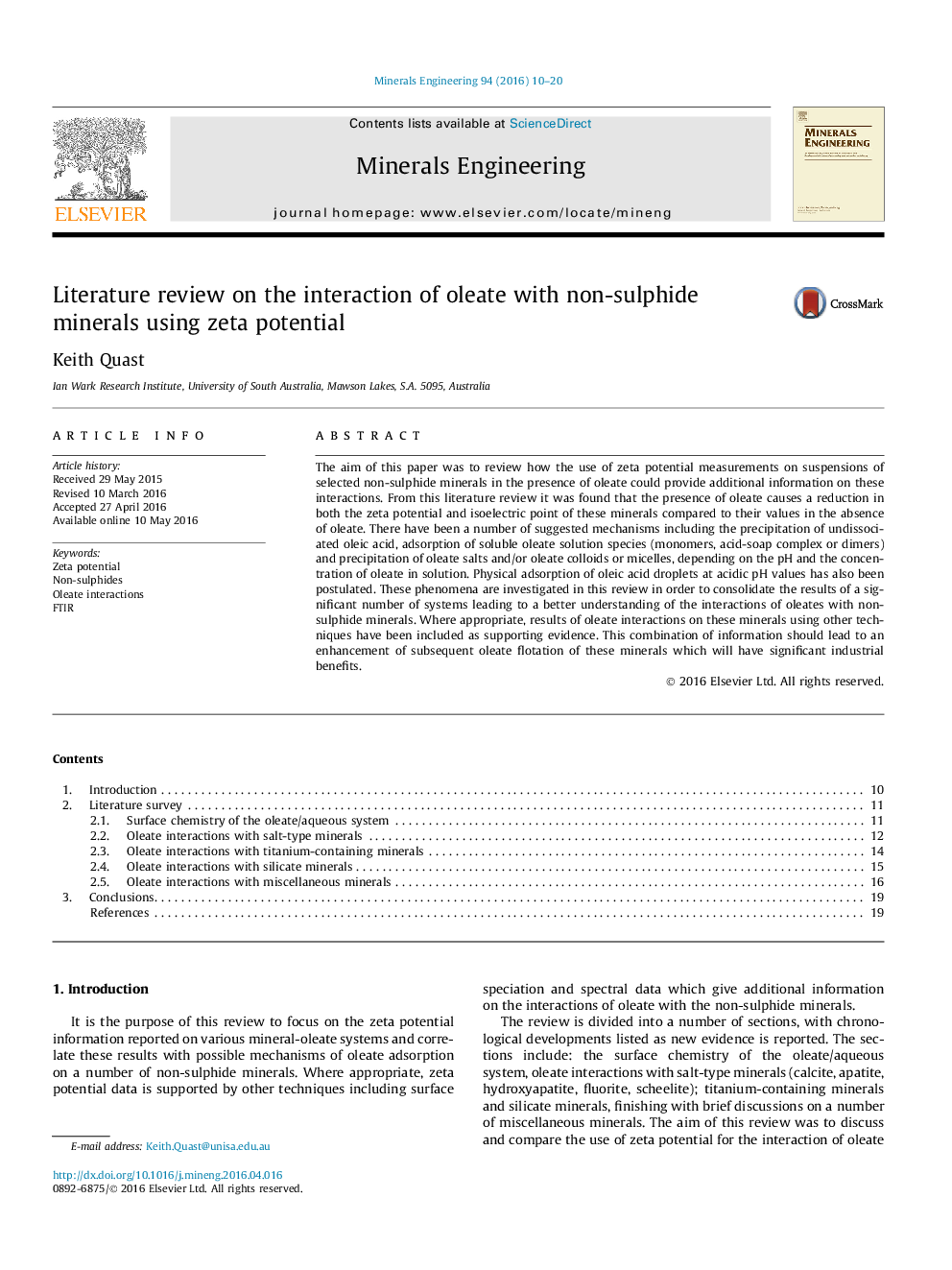| Article ID | Journal | Published Year | Pages | File Type |
|---|---|---|---|---|
| 232727 | Minerals Engineering | 2016 | 11 Pages |
•Adsorption of oleate on non-sulphide minerals usually ascribed to chemisorption.•Presence of oleate usually causes a reduction in zeta potential.•Positive oleate colloids of oleic acid have been identified at low pH.•Physical adsorption of oleic acid droplets can occur at low pH.
The aim of this paper was to review how the use of zeta potential measurements on suspensions of selected non-sulphide minerals in the presence of oleate could provide additional information on these interactions. From this literature review it was found that the presence of oleate causes a reduction in both the zeta potential and isoelectric point of these minerals compared to their values in the absence of oleate. There have been a number of suggested mechanisms including the precipitation of undissociated oleic acid, adsorption of soluble oleate solution species (monomers, acid-soap complex or dimers) and precipitation of oleate salts and/or oleate colloids or micelles, depending on the pH and the concentration of oleate in solution. Physical adsorption of oleic acid droplets at acidic pH values has also been postulated. These phenomena are investigated in this review in order to consolidate the results of a significant number of systems leading to a better understanding of the interactions of oleates with non-sulphide minerals. Where appropriate, results of oleate interactions on these minerals using other techniques have been included as supporting evidence. This combination of information should lead to an enhancement of subsequent oleate flotation of these minerals which will have significant industrial benefits.
